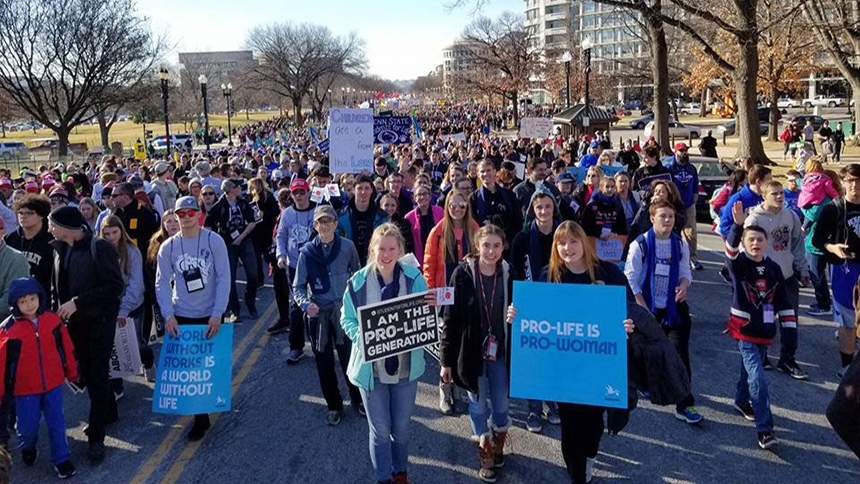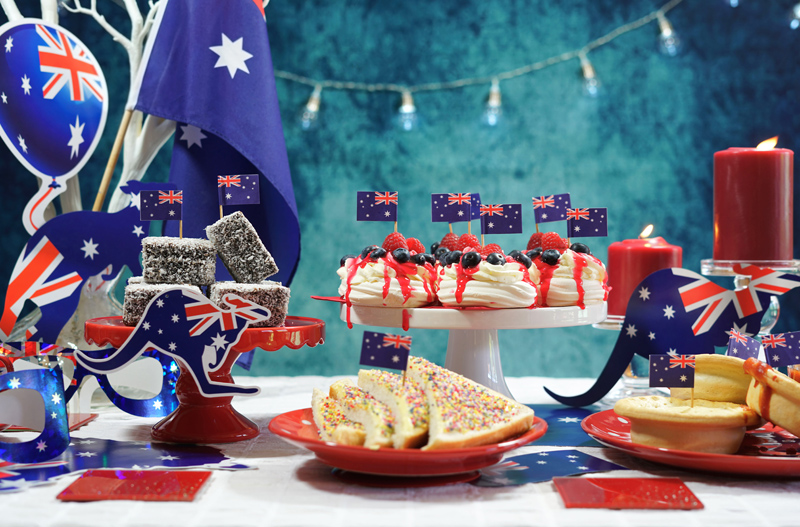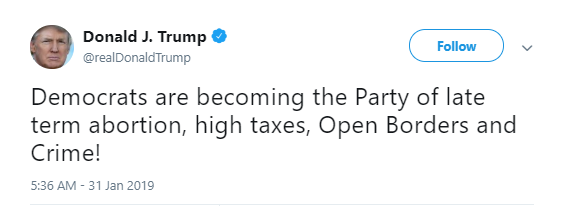- Welcome
- About
- Library
- Elections
- News
- Campaigns
- Standing Campaigns
- Reform Parliamentary Travel Entitlements
- Thank Tim Nicholls for Reinstating the Puberty Blocker Ban
- Stop Late-Term Abortion Bill: Protect Employers from Funding Abortions
- Thank NT Chief Minister Lia Finocchiaro for banning gender-confused men from women’s prisons
- Urgent — Help Stop the Surrogacy Bill 2025
- Tell Jacinta Allan: Stop Protecting Sex Offenders
- We stand with Jacinta Price
- Call on Lia Finocchiaro to Protect Christian Schools
- Thank Amanda Camm for Standing Up for Women
- Tony Burke’s Double Standard: Silencing Voices, Welcoming Extremists
- Thank Andrew Hastie for Defending Our Flag
- Tell the Albanese Govt: Stop Paying Women for Killing Their Babies
- Thank Senator Antic for Standing Up for Truth
- Tell the Melbourne Royal Show: Stop the Bible Ban
- Ask Health Minister Mark Butler: What are you doing to stop sex-selection abortion?
- Protect the Blood Supply – Keep the Ban on Gay Men Donating
- Tell the Liberals: Support Income Splitting for Families
- Tell The Nationals: Scrap Net Zero
- Tell Sussan Ley: Save Women’s Sport
- Thank Senator Henderson and the Coalition for Opposing University Indoctrination
- Tell Jim Chalmers: Stop the Reckless Spending
- Tell Jim Chalmers: Drop the Woke $5 Note and Keep the Monarchy
- Thank Qantas Chairman John Mullen for Rejecting Corporate Wokeness
- Thank the NT Government for Protecting Free Speech and Religious Freedom
- Tell Chris Minns: Defund the Offensive Mardi Gras
- Protect Our Schools from Political Activism
- Axe the Daniel Andrews Statue
- Thank the QLD Premier and QLD Health Minister
- Tell Premier David Crisafulli: Stand for Democracy in QLD – Restore the Right to Debate
- Emergency: Tell Key Senators to stop ‘Digital Prison’ Misinformation Bill
- Thank Peter Dutton for Commitment to Stand United Under One Flag
- Thank QLD Premier for Scrapping the “Truth-telling” Inquiry
- Where is the Honour and Respect for our King?
- Thank Toyota for Ditching Sponsorship of LGBT Parades and Events
- Protect Free Speech: Stop the Misinformation Bill
- Tell the AFL: Axe the ‘Welcome to Country’
- Tell Jim Chalmers: Don’t Ask Creepy Sex Questions on the Census
- Tell Jacinta Allan: Stop Radical Gender Indoctrination in Libraries
- Urgent Action On Babies Born Alive
- WA: Hit pause on dangerous gender self-ID bill
- A Fair Go for Families in Education
- Tell the Australian Olympic Committee: Ensure Respect for Christianity at the 2032 Brisbane Olympics
- Stop the Dangerous New “Human Rights Act”
- Stop Government-Mandated Radical Doctrines in Childcare
- Thank Bill Shorten for No More Prostitutes on the NDIS
- Repeal the Digital ID Bill to Protect Our Freedoms
- Tell the ADF: Stop the woke garbage and get serious about defending our nation
- Ask the Nationals to Support the Family with Income Splitting
- NSW: Stop the Inequity Bill
- Demand Answers from Labor MP Aaron Harper on the Babies Born Alive Bill Inquiry delay
- Defund the ABC over ‘racist country’ smear
- Tell the Premier and Opposition Leader: Keep Art Galleries Safe for Children
- Protect the rights of Biological Females
- Thank Cumberland City Council for Upholding Community Standards
- Tell Anthony Albanese the Bishop says Keep Free Speech
- Thank WA Liberals for ban on transgender drugs for kids
- Thank Anthony Albanese for his strong stand on Religious Freedom
- Thank Sarah Game for bill to prohibit gender ideology
- Thank the Opposition Leader and tell the Premier: Stop the Divisive Voice
- Tell the Premier & Education Minister: Kids should not be learning about bestiality at school
- Thank Archbishop Fisher for standing up for faith-based schools
- NSW: Tell NSW MPs: Oppose the flawed ‘Conversion Practices’ Bill
- Tell Peter Dutton: Protect Christian Schools
- Tell Mark Dreyfus To Keep Protections For Christian Schools
- Tell the PM & Opposition Leader: Protect Kids from Porn
- Tell Adelaide United: Free soccer star Musa Toure
- 27 WA Babies Cry Out From Their Graves
- Stop the Clandestine Censorship
- Keep the Monarchy on our $5 note
- Defund the ABC over Drag Queen activism
- VIC: Tell Victorian MPs: Keep the Lord’s Prayer!
- Hands Off Christian Schools
- Thank Peter Dutton for standing up for Australia Day
- Tell the PM: Stop the woke attack on Australia Day
- Thank the Coalition for their Policy to Keep Children Safe
- Tell the SA Premier: Hands off Anzac Day!
- Say No to Mutilating Healthy Body Parts
- Thank the ICC for banning gender confused men from women’s cricket
- Defend Religious Freedom In WA
- Thank Senator Antic for his bill to prohibit childhood gender transitions
- Federal babies bill must be voted on!
- Tell the Premier and Oppositiona Leader: Respect the Referendum - Repeal the SA Voice
- Thank Peter Dutton for calling for a proper Covid-19 inquiry
- Thank Peter Dutton for taking a stand against Hard Drugs
- Thank the AFL Commission for sticking to footy
- WA: Oppose the Deceiving WA Abortion Bill
- WA: Scrap The Shambolic Cultural Heritage Act
- Protect Children from Daycare Monsters
- Protect Unborn Children
- Tell MPs: Protect Freedom of Speech – Oppose the ACMA Disinformation Bill 2023
- Tell the PM: Protect Religious Freedom – Save Calvary Hospital
- Thank Monash council for cancelling drag queen story time
- Tell the Melbourne Comedy Festival: Reinstate Barry Humphries’ award
- Thank Dennis Hood, Sarah Game and Frank Pangillo for opposing woke language push
- Urge the PM to sack the Classification Board
- Support Henry Pike’s Bill to Save Australia Day
- Keep Moira Deeming MP in the Liberal Party
- Tell Adelaide City Council: Keep the Opening Prayer
- Thank the NRL for saying NO to gay ‘Pride Round’
- Tell Ch 10: Axe The Project over disgusting Jesus joke
- Tell the PM & AG: Protect the best interests of children
- Thank SA Libs for stand against the Voice to SA Parliament
- Thank Church Leaders for Protecting Christian School
- Protect Christian Schools
- Tell Albo: Keep your politics off the $5 note
- Thank Peter Dutton for No Blank Cheque on The Voice
- QLD: Do not attack parent rights and school choice
- Thank Senator Jacinta Price for opposing the divisive ‘Voice’
- Tell Mosman Council: Don't cancel Christmas!
- Thanks for Protecting Freedom of Speech
- Tell the SA Premier: Keep the Lord’s Prayer
- SA: Hands off the Lord’s Prayer
- NT: Stop attack on faith schools in the NT
- Keep using Mother and Father
- WA: Stop Zero Oversight To WA Emergency Powers
- Victoria – the Anti-Christian State
- WA: Defend Religious Freedom In WA
- Thank Anthony Albanese for keeping the Monarchy on our money
- Thank the Australian Catholic Bishops Conference for standing up to gender ideology
- QLD: Sophie's Law - Does the Queensland Government have a heart?
- Thank UAP Senator for standing up to radical identity ideology
- Stop abortion attack on religious hospitals
- Ask Albanese: When will you deliver $275 power bill cut?
- Stop the Killing in the Territories
- Keep opening the Senate with the Lord’s Prayer
- Coalition’s refreshing new voice of truth
- Tell the Manly Sea Eagles: Stick to footy - Ditch the LGBT propaganda
- Keep Christmas Day For Jesus
- Save Freo from “All Ages Drag Show”
- Tell MPs: We need a National Strategy to safeguard babies
- Say No to giving our Sovereignty away
- Say No to changing Birth Certificates in QLD
- Tell the woke NSW Premier: Keep the NSW flag – ditch the identity politics
- Introduce Miles Law to Protect Life in QLD
- QLD: Holding the QLD Premier to Account
- VIC: Andrews government divides children
- Adam Bandt disrespect for Australia, Australians and our Flag
- Keep Christian Chaplains in Schools
- Albanese to Ditch the Queen
- Keep Doors on School Toilets
- Tell the Breastfeeding Association: Do not cave to woke trans ideology
- Keep Blokes out of Women Sport
- Keep Australian Children Safe from Harms
- Mr Morrison - Can you help?
- Defund the UN over extreme abortion and gender ideology stance
- Tell Anthony Albanese: Protect Children from Trans Activists
- Protect Australians: Say no to hard drugs
- Stop Big Tech from Silencing Australians
- Tell MPs: Save Women’s Sport
- Time to Deliver on Religious Discrimination
- End Discrimination based on COVID19 Vaccination Status
- VIC: Act now to save Christian schools’ right to employ
- Tell MPs: Protect Free Speech
- Have your say in stopping kids’ access to online porn
- VIC: Act now to stop prostitution being decriminalised
- The ABC needs fixing
- WA: Free to Change: Stop McGowan’s therapy ban
- VIC: Act now to stop a second failed drug-injecting centre
- Act now to stop trans drugs for children
- Act now to stop Patten’s reckless changes to vilification laws
- Born Alive Bill
- Gambling Campaign
- Past Campaigns
- Events
- Contact
- 365Life
- Mother of the Year Awards
- Media Releases
- Little Music Church
News
President Donald Trump has slammed Democrats’ extreme abortion stance.
Speaking about a Virginia bill which would have allowed abortion up until birth, President Trump called it “terrible” and said that it would "lift up the whole pro-life movement like maybe it’s never been lifted up before."
In another tweet the President wrote that: “Democrats are becoming the Party of late term abortion, high taxes, Open Borders and Crime!”
Virginia state politician Kathy Tran, who pushed the legislation, admitted during a committee hearing that her bill would allow a woman who is in labor to abort her baby.
Gilbert: So where it’s obvious that a woman is about to give birth, she has physical signs that she’s about to give birth, would that still be a point at which she could still request an abortion if she was so certified? She’s dilating?
Tran: Mr. Chairman, you know, that would be a decision that the doctor, the physician, and the woman would make.
Gilbert: I understand that. I’m asking if your bill allows that.
Tran: My bill would allow that, yes.
The controversy didn’t end there. Later, in a radio interview, Democratic Virginia Gov. Ralph Northam provoked outrage after he advocated for infanticide in a radio interview. As Fox News reported:
Democratic Virginia Gov. Ralph Northam … [told] WTOP radio that third-trimester abortions are done with "the consent of obviously the mother, with consent of the physician, multiple physicians by the way, and it’s done in cases where there may be severe deformities or there may be a fetus that’s not viable."
Northam then gave an example in which "the infant would be delivered. The infant would be kept comfortable. The infant would be resuscitated if that’s what the mother and the family desired, and then a discussion would ensue between the physicians and the mother."
Senator. Ben Sasse, a republican from Nebraska, condemned Governor Northam’s remarks:
In just a few years, pro-abortion zealots went from 'safe, legal, and rare' to 'keep the newborns comfortable while the doctor debates infanticide,'
I don't care what party you’re from — if you can’t say that it’s wrong to leave babies to die after birth, get the hell out of public office.

So often when the media covers pro-life issues, if it does at all, it does so in a negative light. It did that again at the recent March for Life in Washington DC, where over 100,000 (and 50,000 in Paris) stood for life from conception. How spectacularly their agenda backfired.

At least 100,000 people marched in Washington, and perhaps over 200,000 marched across the country.
In case you missed the biggest story of the week, the media pushed the line that Catholic school students had harassed and mocked a Native American Indian at the annual pro-life protest. That is, until its cozy narrative was destroyed. As LifeSiteNews reported:
The original video showed the man, “indigenous peoples” activist Nathan Phillips, beating a drum and singing while students in Trump’s iconic red “Make America Great Again” hats laughed and hollered around him, with one student in particular grinning inches from the man’s face. But additional video and firsthand accounts soon revealed Phillips was the one who waded into the group waiting for its bus and decided to beat a drum inches from Nick Sandmann’s face, and other adults who accompanied Phillips shouted taunts like “white people, go back to Europe” at the kids.
Breitbart News highlighted how distorted the media’s coverage was of the pro-life event:
the major networks devoted 19 minutes to coverage of false accusations of racism against the Covington Catholic teens attending the March for Life, in contrast with only 58 seconds spent on the actual annual pro-life event.
Is it any wonder then that the media is losing credibility with the public?
One lawyer one was so incensed by the smearing of the students that he offered his services for free to sue a journalist for defamation.
He wasn’t the only one outraged. President Donald Trump put out a tweet condemning the media for the disgraceful attack on the students:
Nick Sandmann and the students of Covington have become symbols of Fake News and how evil it can be. They have captivated the attention of the world, and I know they will use it for the good - maybe even to bring people together. It started off unpleasant, but can end in a dream!
But he didn’t stop there. The President has also invited the school students to the White House.
The hate that was whipped up by the media was so great that the school will remain closed until police say it is safe for students to return to class.
It’s a reminder that the world is as hostile an environment as ever for Christians.

By David d'Lima
Dear friends, I invite you to use the following eight prayer points suitable for family devotions or church prayers ahead of Australia Day.
1. Almighty God and sovereign of the nations, we pray that the people of Australia will turn in faith to receive Christ as Saviour and Lord.
2. We pray for Queen Elizabeth, and for her representative the Governor-General Sir Peter Cosgrove, and for the six State Governors as they supervise the civic system.
3. We pray for the High Court Chief Justice Susan Kiefel as she gives leadership to help the Court interpret the Constitution and the statutes of the nation.
4. Our Father, be with the Prime Minister Scott Morrison as he advises the Crown, chairs Federal Cabinet, supervises the ministry, and represents the Government.
5. Lord God, guide and bless the Members and Senators in the remaining several weeks of the 45th Federal Parliament. Be with Bill Shorten as he leads the Opposition to scrutinise Government.
6. We pray for General David Hurley as he prepares to take up duties as Australia’s 27th Governor-General.
7. Lord bless the work of the federal government as it provides a fathering project to run in schools, designed to help dads take greater responsibility.
8. We pray for citizenship candidates as they make their pledges of loyalty on Australia Day, that they would truly share Australia’s democratic beliefs, respect it rights and liberties, and obey its laws.
9. We pray the community will utilise Australia Day for the promotion of harmony that builds upon our indigenous, migrant and Christian heritage, as a means of securing a peace and prosperity for all.
10. As the Federal Parliament considers the competing demands of individual rights and the common good, we pray that the historic freedoms of faith, association, contract and speech would be preserved.
Finally, here are a few salient questions about the Australian Flag that may stimulate family discussion ahead of Australia Day.
1. How many Christian crosses are on the Australian flag?
2. How many stars are on the flag?
3. How many points are on the flag’s largest star?
4. Beginning with the letter “F” or “C”, what is the name of the largest star on the Australian Flag?
5. Why was that star enlarged by one point in 1908?
6. What was the name of the snake lifted up by Moses on a pole, prefiguring Christ on the cross? (See John 3:14-15; Numbers 21:8; 2 Kings 18:4).
7. On which two days each year should the flag be flown at half-mast?
8. Which of the United States of America features the Union Jack?
9. According to Number 2:1-2, each Israelite man was instructed to camp under which two vexillological emblems?
10. Centred around the Tent of Meeting, what shape was formed by the twelve tribes as they encamped, according to Numbers 2?
To further explore the Christian concepts underlying Australia’s Star-Crossed Federal Blue Banner, I encourage you to view a short article entitled “Flying the Australian Flag” and also to print copies of a worksheet that enables family members to work together cutting and assembling the deconstructed elements of the flag. The worksheet would also be an excellent children’s resource to use in services on the Australia Day long weekend.

German supermarket giant Aldi has been slammed for pushing political correctness.
In a super PC move, Aldi has painted over the dress on a car parking figure in case it risked offending “gender neutral” persons.
Ema Taylor, who noticed the change at a UK Aldi store, said:
“It's ridiculous. It's gone from being a stick woman to now being a superhero, it's a bit laughable.
“Mums do actually have to give birth to these children so I think I've earned my right to have a picture of me painted in the mother and baby parking space.
“With everything going on in the world who has time to care about a sign on the floor? There's so much more important stuff going on in the world than to be concerned with this kind of thing,”, said Taylor.
Aldi responded to the incident by stating that: “All parent and child car parking spaces at Aldi stores are gender-neutral. This sign was painted incorrectly and will be changed.”
Over 250 Dutch pastors and church leaders are being threatened with criminal prosecution for signing a statement.
Their supposed crime? Signing The Nashville Statement, a document which endorses a biblical view of human sexuality and contains comments such as the following:
WE AFFIRM that God has designed marriage to be a covenantal, sexual, procreative, lifelong union of one man and one woman, as husband and wife, and is meant to signify the covenant love between Christ and his bride the church.
Denny Burk, Professor of Biblical Studies at Boyce College, wrote that:
Even though they simply meant to reaffirm what Christianity has always taught for its entire 2,000-year history, the statement has been met with fierce opposition in the Netherlands.
Over the last several days, the public outcry against these leaders for their Christian convictions has been ferocious. Politicians and celebrities have publicly denounced them. The Hague, which is recognized as the international center for law and justice, flew a rainbow flag in protest of the Nashville Statement. And now, the country’s public prosecution service is “examining the statement to see if there [is] any basis for a criminal investigation,” according to a Dutch news site. The news report cites Article 1 of the Dutch constitution as possible grounds for the investigation, which states that “discrimination on the grounds of religion, belief, political opinion, race or sex or on any other grounds whatsoever shall not be permitted.”
Cultural Marxists are becoming increasingly hostile towards those who dare to dissent from the LGBT agenda.
It’s important that we make a strong stand in Australia and ensure this doesn’t happen here.
FamilyVoice Australia upholds Christian values and the family: permanence of marriage, sanctity of human life, primacy of parenthood and limited government.
Subscribe to our award-winning publications!
Don't miss out on quality research and news that will equip you to face the culture wars.
Society is suffering from ‘progressive’ ideas.
Join the growing movement of young people daring to be counter-cultural.




